A Window into Health Data Literacy through the Lens of Residential Carbon Monoxide
Posted on Tuesday, April 4th, 2023

| Client | Public Health Agency of Canada |
| Professor(s) | SuCheng Lee Lanre Jerry-Ijishakin |
| Program | Interdisciplinary Studies in Human-Centred Design |
| Students | Christie Amaral, Manasi Gode, Shefali Khatri |
Project Description:
Carbon monoxide (CO) is old news, right? That’s what we heard from the literature and from our research speaking with recent Canadian home buyers. In general, people are aware of the colourless, odourless, toxic gas. So why study it?
Well… Awareness is only one piece of a concept that is of special interest to public health organizations today: literacy. In particular, health data literacy (HDL) refers to the ability to read and understand health data—statistics, quotes, infographics, etc.—and to apply them to one’s health-related decision making. HDL includes the capacity to determine the credibility of a source and to critique false and/or misleading information. It is a complex skill beyond mere awareness.
Our client, the Public Health Agency of Canada (PHAC), approached us with the prompt to understand the challenges to raising HDL and to identify opportunities for improving access to literacy-raising initiatives.
Consulting the literature enlightened us on one challenge: the many facets of literacy. It also told us that literacy is the responsibility of not just individuals but society at large. It is mediated by one’s unique health beliefs, tapping into things like perceived susceptibility and self-efficacy. To ensure a feasible, scalable project outcome, we narrowed the scope from HDL in general to one that had value for our client and that was accessible to us: residential carbon monoxide. As our interview data would later validate, our suspicion that preventive actions toward CO were lacking made this an excellent case study for exploring HDL.
We designed a mixed methods study comprising an online survey, interviews with recent home buyers, and subject matter expert (SME) interviews. This approach allowed us to paint a fuller picture with both quantitative and qualitative data, and both lived experience and professional expertise. In total, we had 139 survey responses, 13 participants, and 4 SMEs, spanning different demographics. While we cannot claim that our research represents the entirety of Canada, it provides groundwork that can be scaled to larger, more varied populations.
Through this research, we explored homeowners’ knowledge of carbon monoxide (both self-reported and objective knowledge) and learned of their information sources, their risk perceptions, whether they had taken any precautions against CO at home, and what influenced their behaviours. Emerging themes (which presented both challenges and opportunities) included a reliance on professionals, the importance of context, and the mindset that “seeing is believing.”
From these insights, we developed tools in the form of experience principles, how-might-we statements, and a journey map) that bridged our problem space and solution (design) space. We propose two interventions: (1) a carbon monoxide safety challenge for school children and their families, delivered through fire education services, and (2) an appliance tagging system, conducted by home service technicians as a part of home maintenance visits. Both involve people beyond the homeowners themselves, both are designed to have emotional resonance, and both are a strong attempt to make the invisible visible—all important considerations for a future health data literacy initiative.
Video Presentation
Gallery
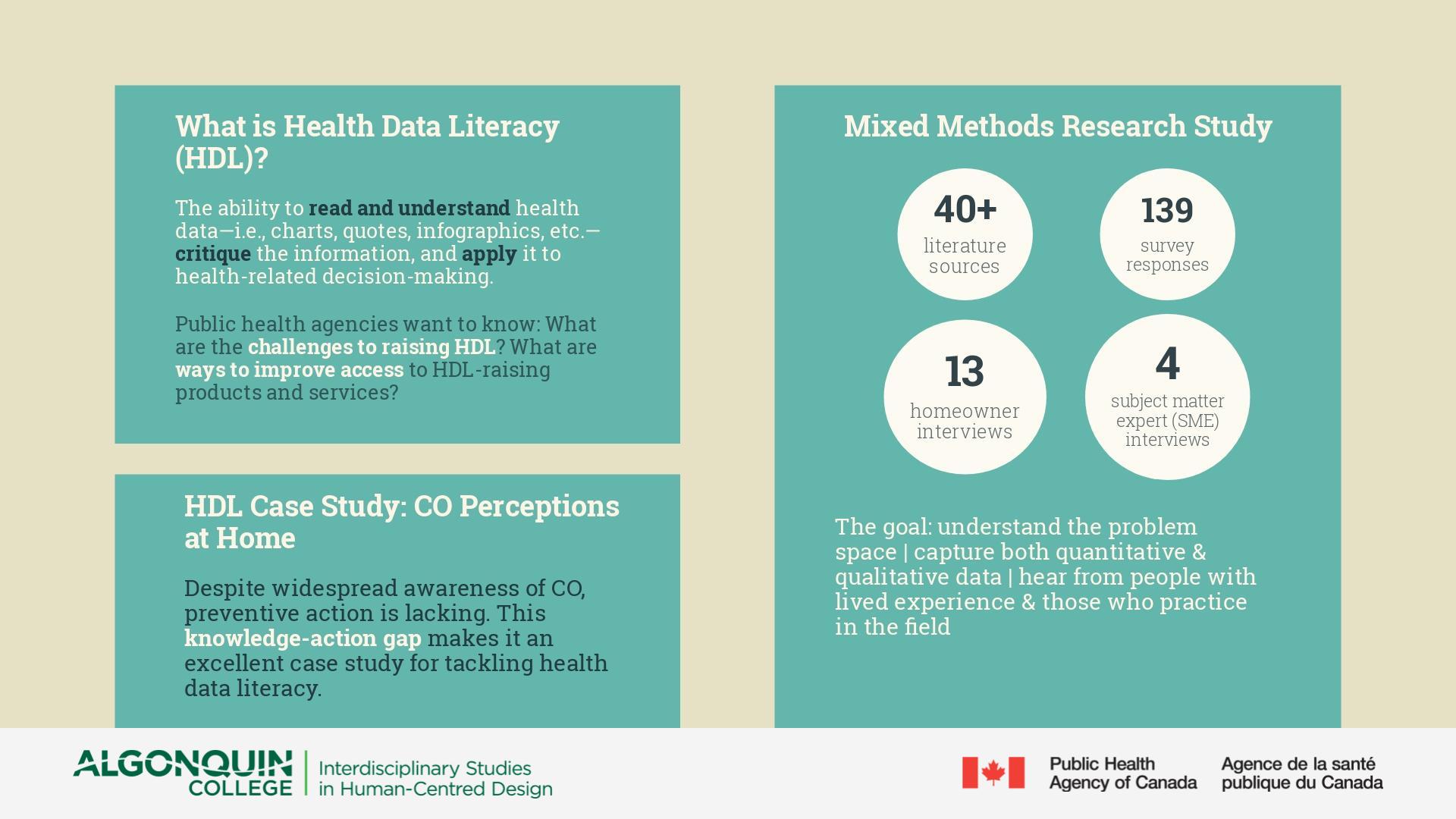
|
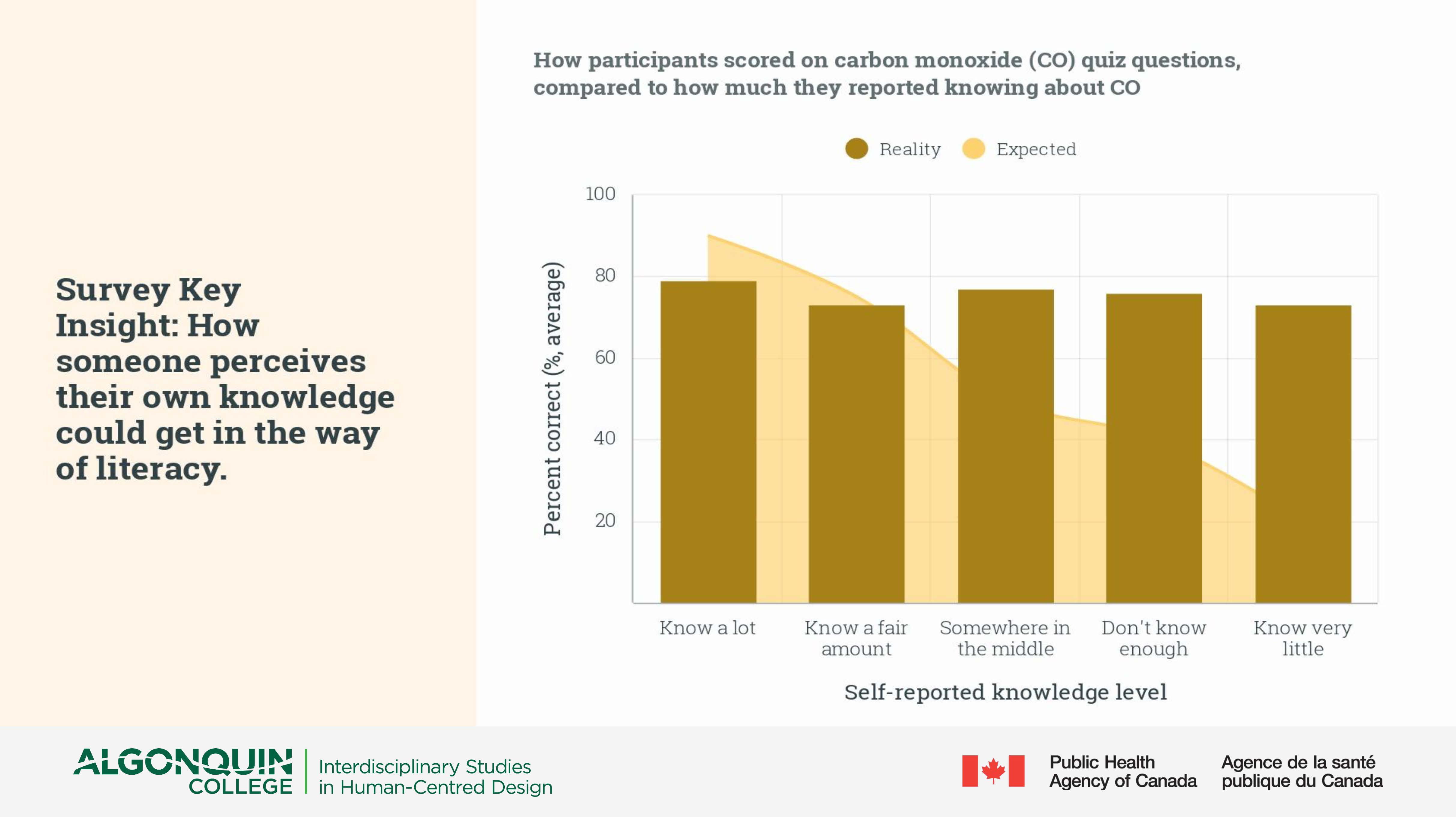
|
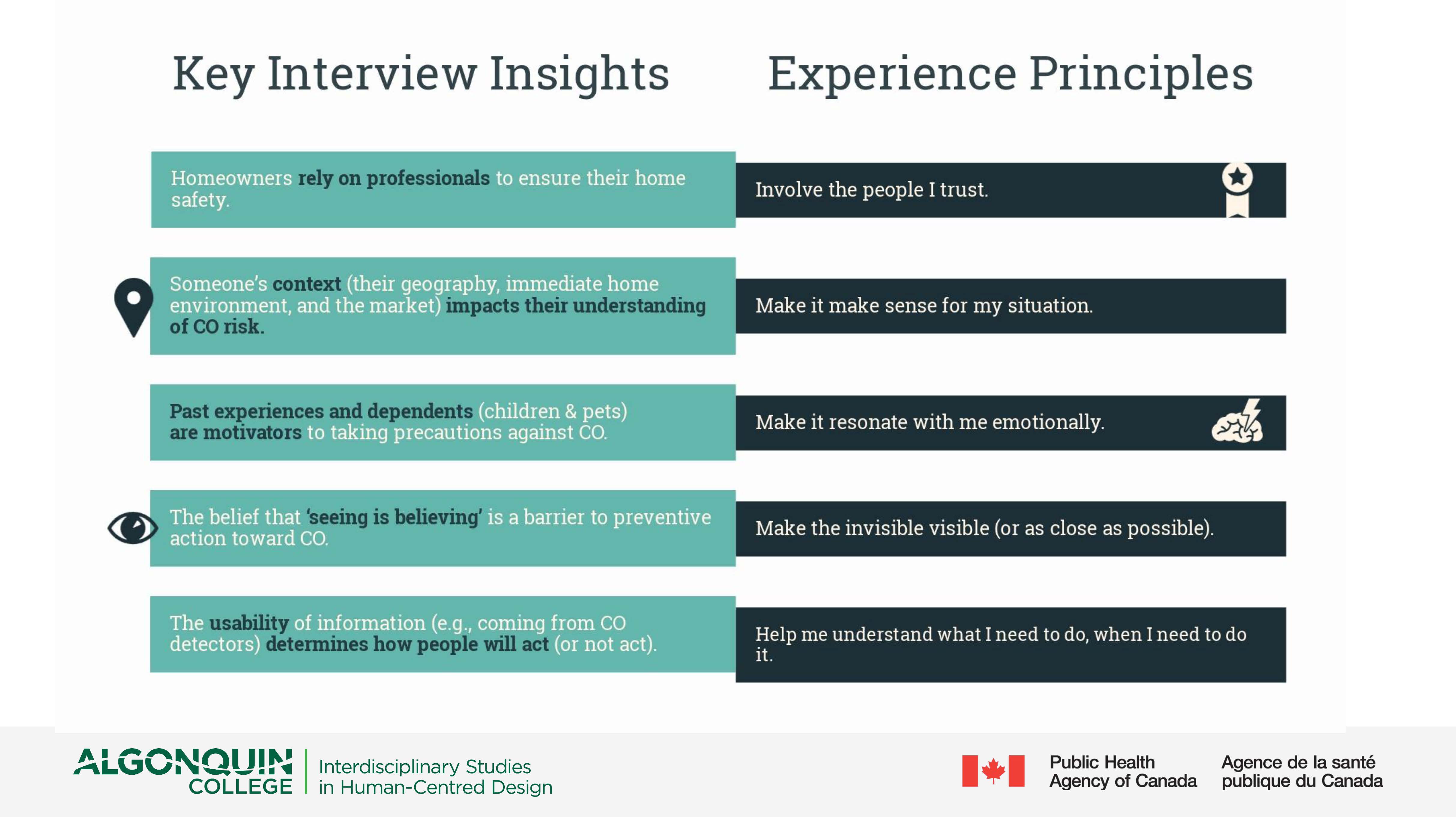
|
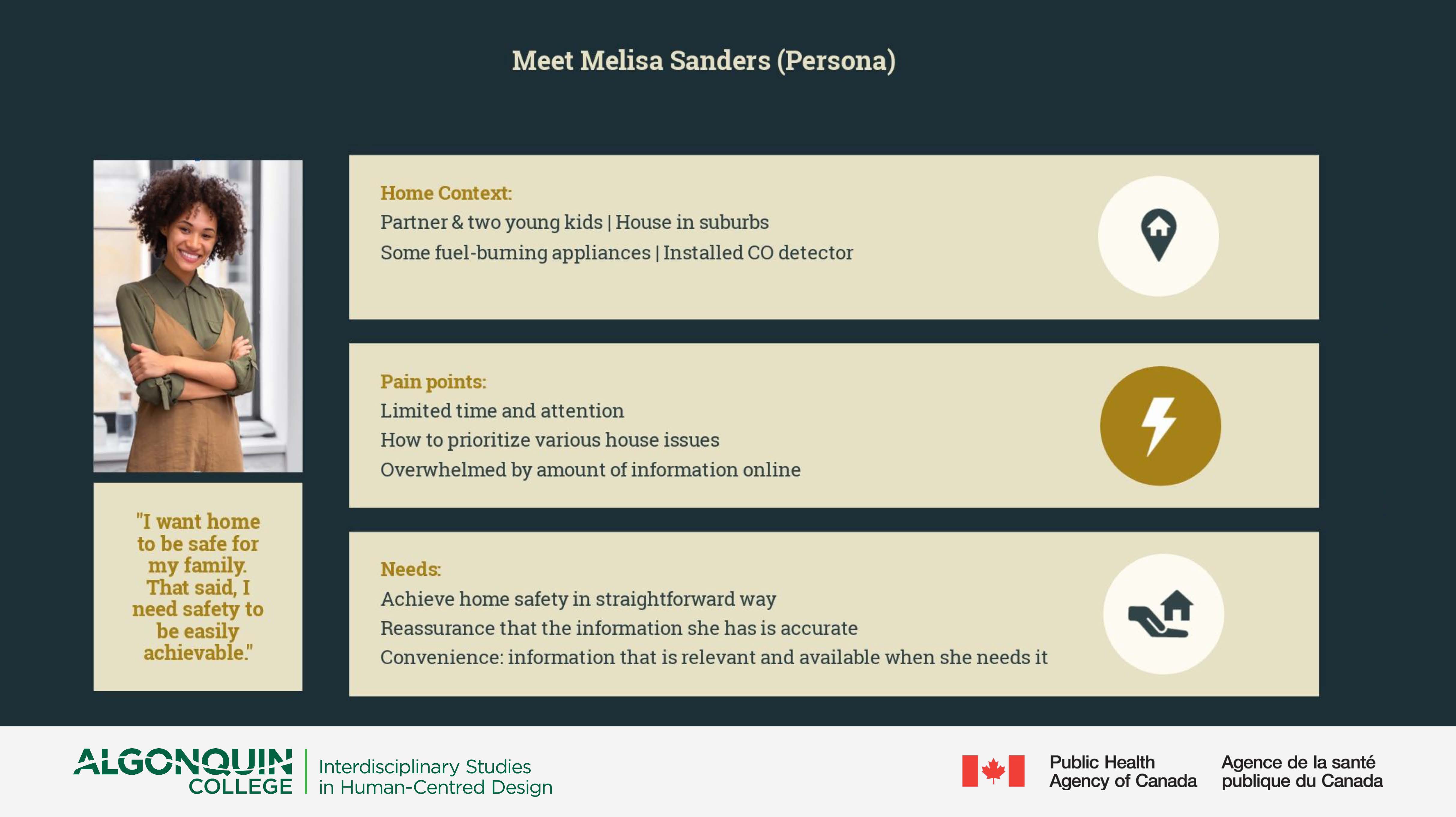
|
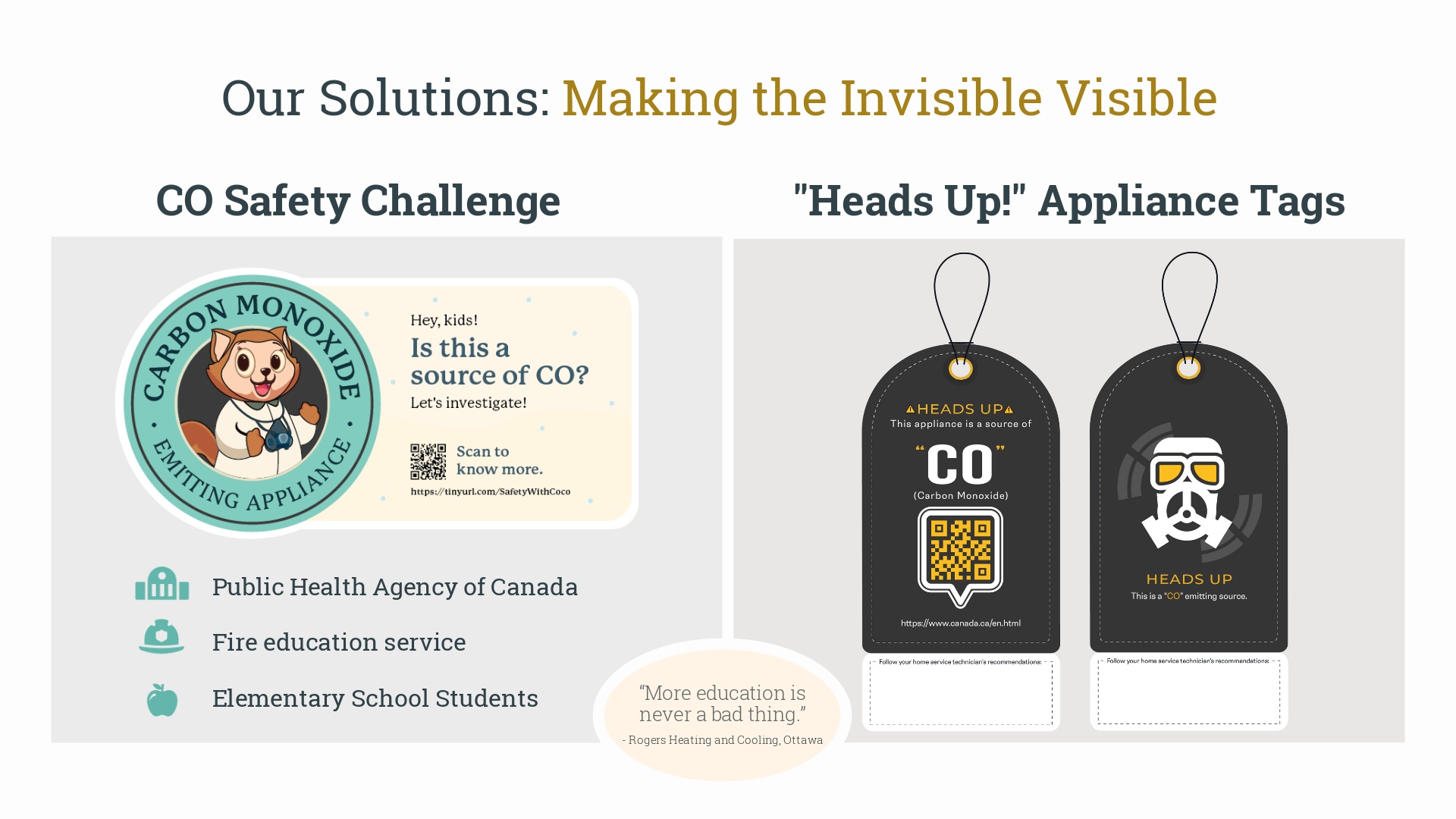
|
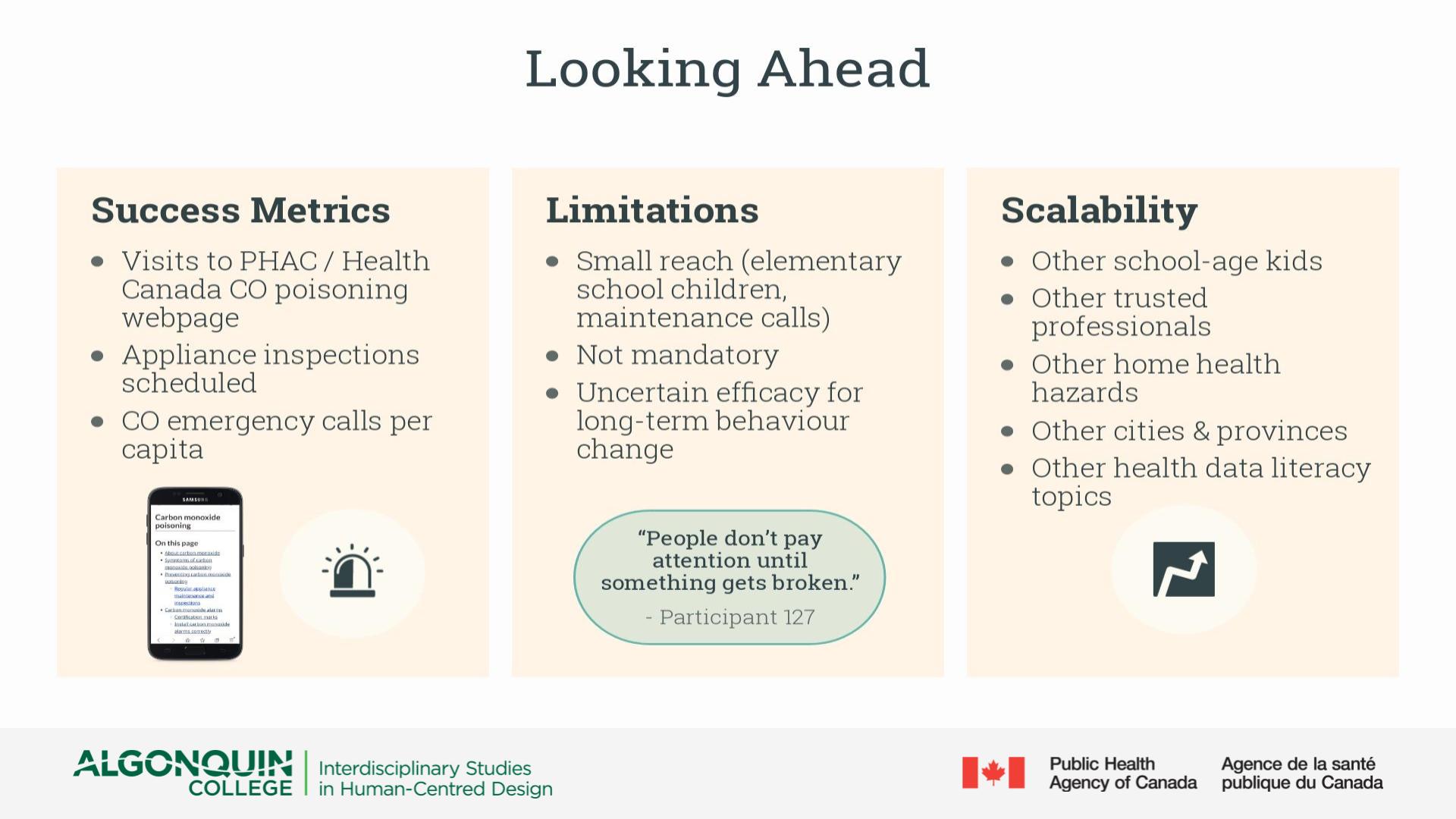
|